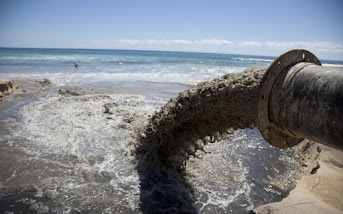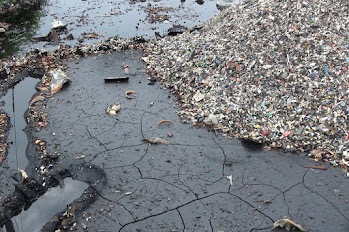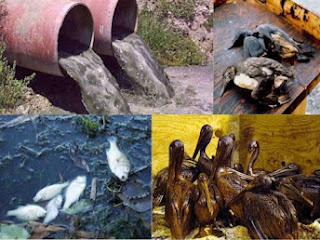essay on environmental pollution in 250 words-Nepal-2022
ENVIRONMENTAL POLLUTION
Environment simply refers to ours
surrounding. All the natural and man-made things that we see are the elements
of the environment. Pollution means decline of the original qualities of the
elements of the environment like air, water, land, etc. Our environment
determines our health and civilization.
Environmental pollution is one of the
greatest threats of the world today. All living being birds, animals, insects,
plants and even human beings are victims of pollution. No part of the world now
is unaffected by the problem of pollution these days.
Pollution is of different types. They
are air pollution, water pollution and land pollution. Pollution causes various
kinds of harms. Polluted air causes lung diseases, pain ad asthma. Similarly,
when we drink polluted water become ill with diarrhea, dysentery, jaundice,
etc. Loud noise harms our ear. However, the greatest harm is the depletion of
the ozone layer. It causes increase in temperature in the earth, acid rain and
drought.
The main reason of pollution is industrialization
and population increase. These two bring about environmental change. Many
factories have been established to produce goods. These factories and vehicles
like bus, truck, car, motorcycle emit huge quantities of smoke into the
atmosphere. Similarly, over population causes deforestation. So the ecological
balance of nature is disturbed.
Environmental problem has been a major
problem in the cities of Nepal. The industries are located in the cities like
Kathmandu, Pokhara, Biratnagar and Chitwan. Population density is also high
there. We do not have good system for the disposal of garbage. We link our
drainage to the nearby rivers. So the people in these places suffer from
different communicable diseases.
It is the duty of the government and
citizens to take the initiative to make the world a better place. Awareness in
people is essential. If human beings as well as other organisms are to survive,
the environment must be kept neat and clean.
AIR POLLUTION
For the well-being of living beings, fresh
air is the most important element. Air
pollution is the undesirable change in the physical or biotic elements of the
environment which may cause adverse effects to the biotic community.
Pollutants can be divided into two categories on the basis of their production.
They are:
i.
PRIMARY POLLUTANTS:
They
can be defined as the pollutants which are directly emitted to the environment
from the source. For example: nitrogen derivatives, oxides, halogens, etc.
ii.
SECONDARY POLLUTANTS:
They can be defined as the pollutants which are not directly emitted but are formed when primary pollutants chemical react in the atmosphere. For example: ozone, formaldehyde, acetyl nitrate, etc.
Dust particles which are emitted from
industries and factories, pollutants from burning coal and improper management
of waste products, smoke emitted from vehicles, etc. are the major causes of
air pollution.
SOURCES OF AIR POLLUTION
a)
NATURAL RESOURCES:
These sources of air pollution are directly
related to the activities of the nature. Examples: volcano eruption, forest
fire, dust storms, etc.
b)
ARTIFICIAL RESOURCES:
The sources of air pollution which are not
naturally made but caused due to human activities are called artificial
sources. Examples: CO, CO2, NO, NO2, SO2, Cl2,
NH3, etc. gases produced by burning fuel, industrialization, over
population, deforestation, automobile, nuclear explosions, etc.
EFFECTS OF AIR POLLUTION
Air pollution may cause various short and long
term effects in the elements of the environment and human health. The effects
caused due to air pollution are:
a.
REDUCTION IN VISIBILTY:
When various gases and dust particles mix in
the atmosphere, it makes the sky blurry which is often termed as haze. This is
the reason why people living in city areas cannot enjoy the clear sky. Due to
fog and smog, people cannot see nearby objects clearly which makes it much
risky to drive vehicles and fly airplanes due to reduced visibility.
b.
REDUCTION IN SOLAR RADIATION:
The areas where air pollution is high, solar
radiation is absorbed by dust particles and moved to various place. Due to
this, the amount of solar radiation required to reach the surface cannot get
there and there will be the reduction of solar radiation. On the other hand,
the temperature of other areas increases drastically which is harmful to living
beings.
c.
GREEN HOUSE EFFECT:
Various greenhouse gases like carbon dioxide,
nitrous oxide, methane, ozone, Sulphur dioxide, etc. formed due to air
pollution act like a blanket in the atmosphere, which traps the radiation and
it does not let the heat escape to outer space. This causes rapid increase in
the temperature of the earth. This is known as greenhouse effect.
d.
INHIBITION IN BIOLOGICAL GROWTH OF PLANTS:
e.
ADVERSE EFFECT ON HUMAN HEALTH:
Air pollution has contributed directly
to the deteriorating health condition oh humans. Gases like carbon monoxide
causes headache, nausea, difficulty in breathing, etc. Nitrogen oxide causes
stinging of the eyes, coughing, headache, dry throat, congestion, etc. It may
also cause insomnia, laziness, etc.
f.
DEPLETION OF OZONE LAYER:
The chemicals causing ozone layer depletion
are mainly chlorofluorocarbons (CFCs), methyl chloroform, carbon tetrachloride,
methyl bromide, etc. which are emitted due to air pollution. These compounds
decompose in the atmosphere and form nascent hydrogen, chlorine, bromine, etc.
which deplete the ozone layer.
g.
ACID RAIN:
The process of deposition of acid gases like
Sulphur dioxide, nitrogen dioxide, etc. from the atmosphere on land in the form
of rain is called Acid rain. In the atmosphere these oxides are unable to
remain in the gaseous state and hence they react with moisture to form acids
which fall into the earth as acid rain. Buildings, mountains, statues, bridges,
etc. are corroded by acid rains.
h.
DESTRUCTION OF HISTORICAL MONUMENTS:
Over a long period of time, air
pollution can damage various monuments and buildings of historical importance
permanently lowering their esteem. We can take the example of Taj mahal in
India which is being damged due to excessive pollution.
i.
CHANGE IN CLIMATE:
Air pollution causes dust as well as gases to
collect in the atmosphere which increases the temperature in some places and
decreases the temperature in other places. Due to this, ice melts and it may
cause floods in some regions and drought in others.
MEASURES TO CONTROL AIR POLLUTION
In order to prevent any further air
pollution, the following measures can be implemented:
1. The emission of air pollutants from industries
should be controlled by using electrostatic precipitators of filter.
2. The industrial areas should be constructed far
from human settlements.
3. Over population should be controlled.
4. Some cheap fuels with higher Sulphur content should
be banned and the use of disuphurized coal should be encouraged.
5. Roadside plantation of trees should be done
along the side of the roads which help to minimize the content of carbon
dioxide and carbon monoxide.
6. Alternate sources of energy such as solar
energy, wind energy, etc. should be used instead of petroleum products.
7. Various awareness programmes about the effects
of air pollution should be conducted.
WATER POLLUTION
Water in its purest form is colorless and
odourless. But due to various human as well as natural activities, many
pollutants enter the sources of water and make them polluted. This causes the
water to be unsafe for daily usage. Water pollution can be defined as any
undesirable changes in physical and biotic element of water. It degrades the
quality of water which may cause serious health hazards.
Sources of Water Pollution
Although water pollution is caused by both humans and natural
activities, mostly humans are only responsible for this problem. Natural causes
may be mixing of dust in sources of water, production of bacteria and harmful
germs in water. Thus, the causes of water pollution can be summarized below:
a) Sewage water:
The liquid waste
discharged from industrial as well as domestic Sources is called sewage. This sewage
without any treatment is directly discharged into sources of water like rivers,
lakes, etc. This activity has resulted in spread of water borne diseases as
well as the depletion of aquatic life.
b) Contaminated from industries:
Along with
the production of various useful products from industries, they also produce
various chemical, papers and radioactive substances which are directly
discharged into the sources of water without any treatment. Thus, the water
will neither be capable of holding aquatic life nor will it be fit for human consumption.
c) Agricultural wastes:
Farmers use
various poisonous chemicals like DDT, BHC, Aldrin, etc. to kill pests and
insects and increase the crop yield. But, sometimes farmers use these
fertilizers in excessive amount due to lack of knowledge about their use.
During the rainy season or due to human causes, such harmful chemicals mix with
sources of water and kill all the aquatic lives in the water. It may also
cause harm to humans as well.
d) Obstruction in flow of water:
If there is any sort of obstruction in the flow of water, it may cause all the pollutants to get collected in the source of water. This may cause the water to get more polluted which can be a reason for the end of the aquatic life.
e) Oily pollution:
Oil is an important fuel. But it is one of the major causes of water pollution. Through various means such as leakage in oil tanks, spilling and washing vehicles, etc. oil reaches the water surface and it decreases the oxygenation in water which kills the aquatic life.
f) Radioactive substances:
Radioactive substances released from mines through various means mix with sources of water. Due to this, it may be Lethal to plants and animals including humans.
Measures to control water pollution
Water pollution can be minimized by the following activities:
1. Wastes ejected from homes and factories must be recycled by
implementing recycling facilities.
2. Dead bodies of living beings must be properly disposed either by
burning or burying.
3. The surrounding environment of sources of water must be kept clean
by planting trees and preserving them.
4. The use of compost manure should be encouraged during cultivation
rather than using pesticides, insecticides and other harmful fertilizers.
5. Proper drainage system must be built for efficient collection and
treatment of wastes.
6. Various legal
measures must be implemented for the protection of rivers and use of safe water.
SOIL POLLUTION
Soil is a vital part for living beings
because it provides a habitat to animals, plants, insects, human and basically
every living being in the world. Soil provides necessary moisture as well as
minerals to support plants life. Plants prevent erosion and many natural
disasters. Many insects and microbes live in soil. Therefore, soil is an
important element for insects, plants, animals and humans.
The degradation of soil due to the
presence of various unwanted chemicals altering the natural state of the soil
is called soil pollution. It is harmful
to plants as well as any other forms of life. Uneducated farmers use insecticides,
pesticides and various fertilizers in excess amount which not only degrades the
quality of soil such as soil texture, water holding capacity, porosity, etc.
but also minimizes crop yield. This also kills various useful animals living
inside the soil. Soil pollution is mostly found in urban and industrialized
areas. If land is polluted, to neither plants can develop properly nor is it
suitable for animals.
![]() In short, if the physical
and chemical properties of the land change and cause harm to plants as well as
animals, it is called soil pollution.
In short, if the physical
and chemical properties of the land change and cause harm to plants as well as
animals, it is called soil pollution.
Sources of soil pollution
Land gets polluted because of various reasons. There are various sources of land pollution such as domestic wastes, use of harmful chemicals, industrial wastes, use of fertilizers, acid rain, etc. The wastes emitted from sources are the main pollution of soil. The major reasons for the pollution of land are as follows:
a) Domestic wastes
Many products, both edible and non- edible, are
used in our daily life. Domestic wastes include waste products such as dust,
excreta, broken utensils, plastic, contaminated food etc. When these wastes
come in contact with land, it may produce many harmful microbes which also
supports in the formation of various diseases. If lots of wastes get deposited
in a certain place, it may act as a breeding place for various bacteria. Land
pollution may also decrease the fertility of soil.
b) Excessive use of pesticides
Farmer's main job is to cultivate various crops. However, sometimes various insects and pests attack their crops. In order to protect the crops from any damage, many chemical compounds are used. These chemicals protect the crops from harmful insects. But they also pollute the soil. Due to this reason, insecticides, fungicides, weedicides, etc. are considered as pollutants. The most dangerous substances that cause harm to the soil are DDT, dialdrin, Aldrin, parathion, etc.
c) Industrial waste
Many useful objects are manufactured by industries. However, some other objects which cause pollution are also emitted. The substances which are thrown from factories include chemicals, metals, nonmetals, waste products, living wastes, etc. which cause harm to the natural quality of the soil which pollutes it and degrades the crop yield. It may also adversely harm the living animals in the polluted soil.
d) Use of chemical fertilizers
Many fertilizers are used to increase the productivity and
fertility of the soil. If it is used in proper amount, it may increase the crop
yield. However, excessive use of these fertilizers is the major cause of soil
pollution. Fertilizers contain various elements such as Arsenic (As), Barium
(Ba), Calcium (Ca), Cobalt (Co), Copper (Cu), Zinc (Zn), Mercury (Hg), Lead (Pb)
etc. These elements are responsible for killing various useful living organisms
in the soil and also causing imbalance in the nutrients of the soil.
e) Municipal Wastes
Municipalities are the major sources of waste products.
These waste products most often do not get disposed in the right area due to
which the soil gets contaminated. These waters are both organic and inorganic
and are responsible for the depletion of fertility of the soil.
f) Acid rain
Basically, the presence of any sorts of acid in rain is
regarded as acid rain. The major compounds causing acid rain are sulphuric acid
(H2S04), nitric acid (HN03), hydrochloric acid (HCI), Carbonic acid (H2C03).
MEASURES
TO CONTROL SOIL POLLUTION
1. The use of harmful chemical fertilizers must
be replaced by compost mature in order to maximize the crop yield.
2. The use of pesticides and insecticides must be
minimized and other methods of controlling pests which do not contaminate the
soil must be used.
3. Proper disposal of domestic wastes should be
established.
4. The irrigation of fields using polluted water
must be discouraged.
5. The radioactive substances emitted from
factories and laboratories must be appropriately disposed.
6. Proper drainage system must be built for the
disposal human excreta.
7. Afforestation must be done in order to prevent
the soil erosion from natural disasters such as floods, landslides, etc.
8. The use of materials that do not decay over a
certain period of time must be minimized.
9. Farmers must be trained and educated through
various programmes on proper use of fertilizers.
10. Awareness programmes
must be conducted to aware the people about the harmful effects of soil
pollution.
11. Soil conservation
methods should be implemented to preserve the soil.
Chemical Pollution
Environmental deterioration due to
unscientific and improper use of chemical substances is called chemical
pollution. Our
environment is getting increasingly unhygienic and polluted day by day because
of this chemical pollution. In general, chemical pollution is excessive in the
areas with high population density.
Some causes of chemical pollution are as
follows:
1. Chemical fertilizers:
Chemical
fertilizers and insecticides used by the farmers constitute the major part of
chemical pollution. The chemicals contained in fertilizers get dissolved in
water and reach rivers, streams and ponds. This process supports the excessive
growth of algae and other immaterial grasses. This obviously results in
over-exploitation of oxygen in the water when they decay after their death. It
brings a gradual reduction in the number of organisms in the water as they have
to undergo oxygen deficiency.
2. Insecticides:
The use of
insecticides has a negative impact on useful plants and organisms as well. DDT,
BHC, methoxychloride, etc. are commonly used insecticides which kill many
useful insects and hamper the growth of some plants. This chemical is stored in
plants and animals and harms them causing chronic and infectious diseases. Many
animals who feed on dead animals (death is caused by insecticides) are badly
affected by insecticides.
Dieldrine, aldrin,
cobalt, lead, mercury, etc. directly pollute our environment. The use of lead
containing petrol is seriously injurious to our health. Scientists are making
efforts to produce lead free petrol. The industries established on the bank of
rivers, seas and oceans excrete a great amount of mercury that affects fish and
other aquatic animals the sea. Many people were killed because of eating the
fish containing profuse level of mercury in 1950 in Japan.
3. Refuses and waste materials:
Dirt and waste materials are the main causes of environmental pollution. The
rapid degradation of our environment is probably owing to improper disposal of
dirt and garbage being increasingly collected day to day. The noxious
substances in the dirt spread out in the air and water causing rise in
atmospheric pollution.
4. Plastic:
Plastic is used to
make utensils, bags, pipes and many other things. The things made by plastic
are not decomposed; it ultimately creates an alarming problem in the
environment. This gives off poisonous gas on being burnt. Hence, it is really
essential to develop the recycling process of waste plastic in order to save
the environment from being polluted.
3. Smoke from the means of transport and industries:
Greenhouse effect is on the rise due to the increasing quantity of carbon dioxide in the air. It has resulted in global temperature increment and dreadful droughts. High temperature accelerates the melting of snow in the polar regions causing the sea surface to rise higher. The lands along the edge of the sea will then come under water. Dust and smoke cause chronic lung diseases in animals. Moreover, dense smoke has a negative effect on the environment. It causes lung diseases.
4. Colours used in foodstuffs:
Many people prefer to
use different colours in foodstuffs and drinks like tea, coffee, chocolate,
etc. to make them attractive to look. This kind of use of colours in food is ruinous
to our health. It increases the possibility of death by causing diseases like
cancer.
5. Synthetic clingers:
Control measures of chemical pollution
l. Rules and regulations
are to be made to establish industries, factories and other thermal plants far
from residential areas.
2. Farmers are suggested
for the use of organic fertilizers rather than chemical fertilizers.
3. Trainings should be
given to farmers for the wise and proper use of chemical fertilizers,
insecticides and pesticides.
4. The waste
water, dyes and other liquids released from industrial areas must be
purified before mixing them into water bodies.
5. Noxious smokes
from industries should not be allowed spread in the air.
6.People must be
conscious of the results of using harmful substances in food.
7.Unnecessary use of
fertilizers and insecticides should not be done.
8. Vehicles and
industries should be kept in proper conditions.
Pollution control is basically integral to maintain natural balance. Today it is a bounded duty of all of us to protect our environment from being deteriorated. Scientists have been engaged in finding out easier methods of environmental preservation.
Management of
bio-degradable and non-biodegradable wastes
Solid waste is considered
as any sort of bio-degradable and non-biodegradable garbage such as food
wastes, construction debris, plastic, clothes etc. Primarily, the amount
of solid waste is increasing day by day in urban areas in an alarming rate. The
increase in the amount of domestic as well as industrial wastes due to over
population causes environmental imbalance.
The unwanted or unusable
wastes from industrial, commercial, agricultural operations and even from
community activities are called solid wastes. Some kinds of wastes around us
are garbage refuse, plastic, broken metals, glass pieces, clothes, rocks, green
wastes, paper, etc. On the basis of the characteristics, solid wastes can be
classified into biodegradable and non-biodegradable solid wastes.
- Biodegradable wastes
The wastes which consist of organic matter and can be decomposed
into their simpler components such as carbon dioxide, water, methane and other
organic molecules by micro-organisms in a short time period are called
biodegradable wastes. Kitchen wastes, dead animals, clothes, paper, human
wastes, manures, etc. are the biodegradable wastes.
















.png)



Post a Comment
0 Comments